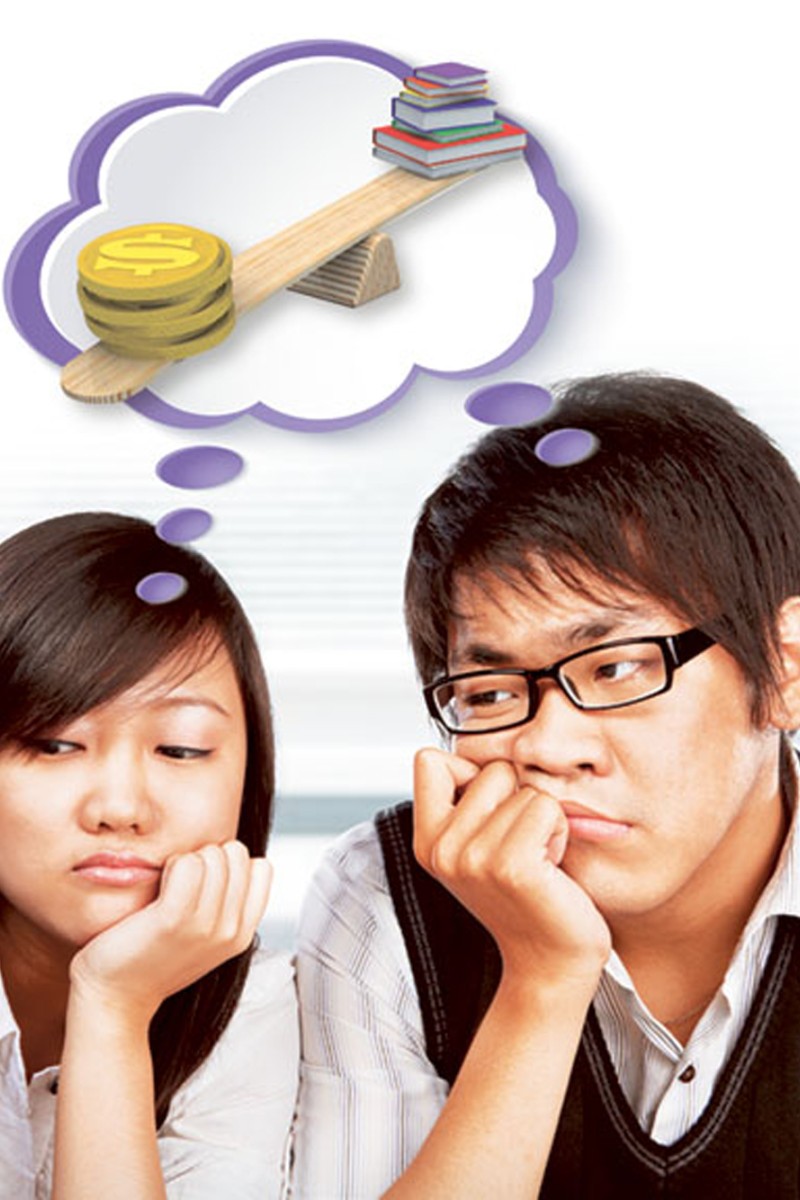
Buying textbooks is one of the most expensive parts of going to university. HKIS student writer Yashvardhan Bardoloi explores the economics behind the textbook industry


If you want to learn economics, start with a textbook. It doesn’t even need to be an economics textbook. You can complete your first economics lesson without so much as opening the front cover, and here’s why.
Textbooks are expensive. A quick scroll through the introductory economics books on Amazon shows that most cost between HK$1,938 and HK$2,326.
Hong Kong’s Consumer Council has found that, on average, textbook costs amount to more than HK$2,200 annually just for primary school students. At many US universities, students can find themselves coughing up more than US$1,000 a year for required books.
While digital books and websites have hit the traditional publishing industry, textbook prices have increased sharply over the years. University textbook costs have risen at more than triple the rate of inflation since the late 1970s –
faster even than house prices and medical bills.
Why are textbooks so expensive?
Despite what many publishers claim, printing costs are not the main culprit. It is true that publishing companies face high startup costs, but once the initial equipment has been purchased, the cost of producing textbooks is not very high.
Those glossy pages, intricate diagrams, and payments to authors do not come cheap, but production costs and royalties ultimately account for only 45 cents on every
US dollar of textbook revenue.
The steep prices can be explained by incentives, choice, and competition.
Let’s begin with incentives. University professors and lecturers have little incentive to consider costs when assigning books. The cost of the books is entirely on the student.
It makes no difference to a professor whether they assign a textbook costing HK$400 or
HK$4,000. Like doctors prescribing medicine, professors tell the students which books they need, and have no incentive to find affordable options.
Another of the key problems is choice. Consumers generally won’t buy products they see as overpriced, and this eventually leads to lower prices. This hasn’t happened in the textbook market because students don’t have a choice.
Most patients will agree to pay exorbitant prices for medicine to avoid cutting corners when it comes to their health. In the same way, most students will shell out as much as is required for a textbook out of fear of being inadequately prepared for a course. The patient must trust the doctor’s decision on which treatment is best, and the student must trust the professor’s decision on which textbook to use.
A trapped market
In a situation like this, a competitive market would be expected to drive down prices.
Companies in the publishing industry could exploit a simple opportunity to undercut competitors on price and capture a large chunk of the business.
The textbook market, however, is far from a model for competition. Just five publishers account for 80 per cent of sales. These companies have little incentive to compete with each other on price – it is mutually beneficial to keep prices high – and publishing, with its high startup costs, attracts few new entrants.
Publishers and textbook authors also frequently publish revised editions without making many meaningful changes to the content.
As professors and teachers adopt newer editions, students are dissuaded from using older, second-hand editions and libraries are discouraged from stocking those textbooks. This further boosts publishers’ profits and authors’ royalty cheques – at students’ expense, of course.
Opening the door to education
Open textbooks hold a possible solution. These textbooks are peer-reviewed and written by experts, just like traditional textbooks, but they are under an open licence. This means that no publisher has rights to the book, and the material is free to the public.
Naturally, open textbooks also earn the authors a lot less, which means there’s less incentive to write them.
Time will tell whether open textbooks will take hold and offset the price of traditional books. In the meantime, best get stuck into that thousand-dollar economics book!
